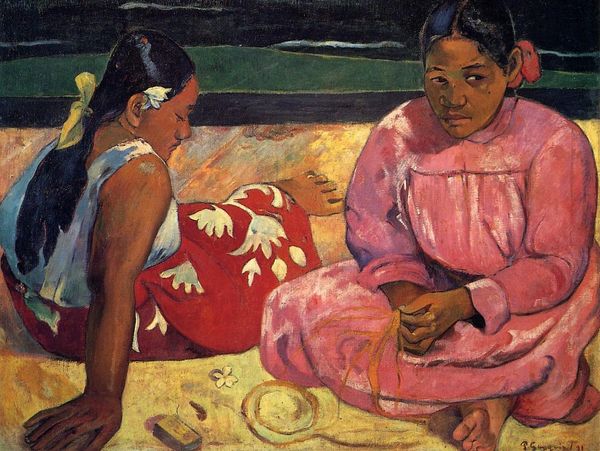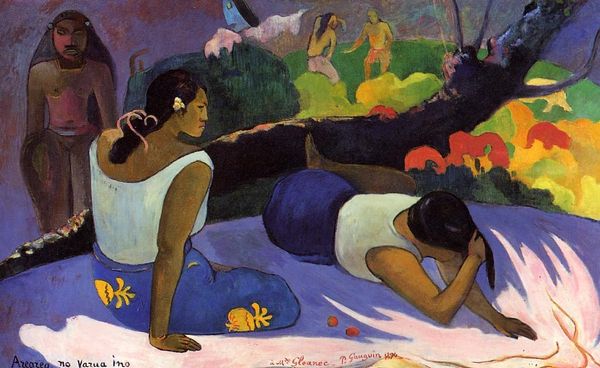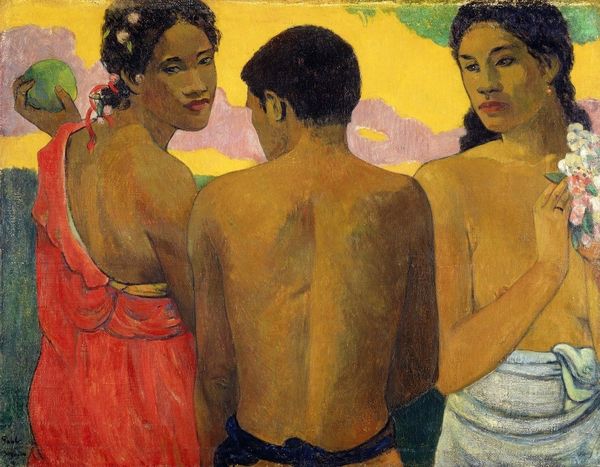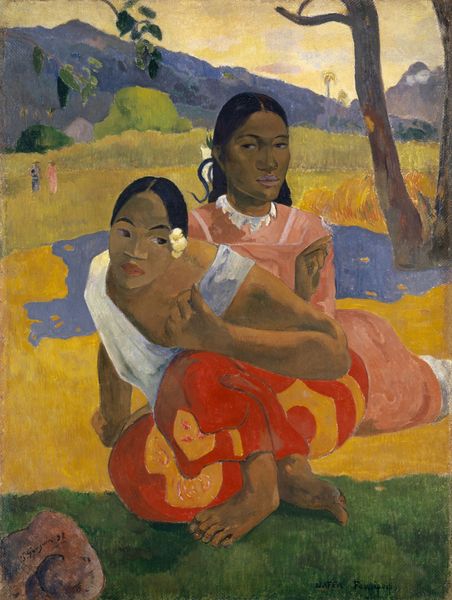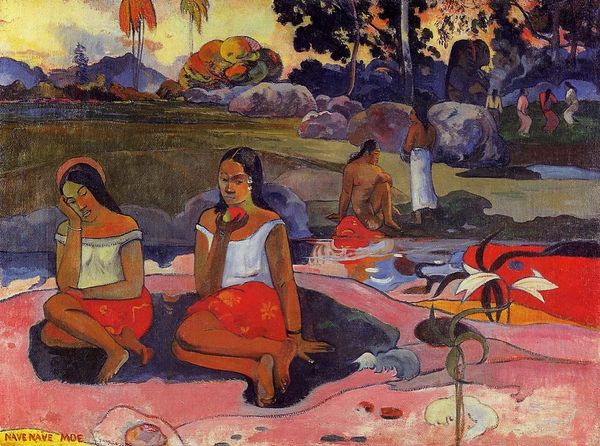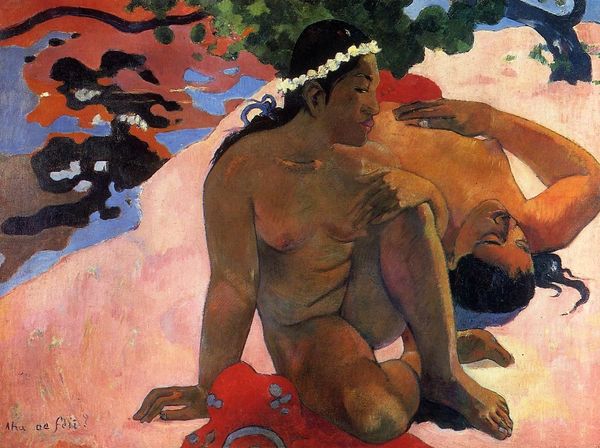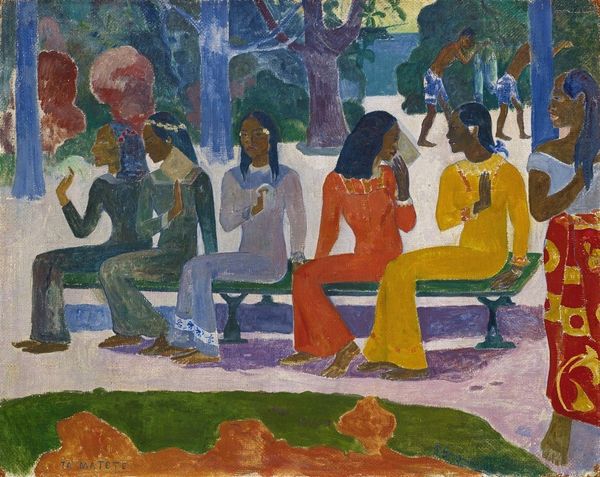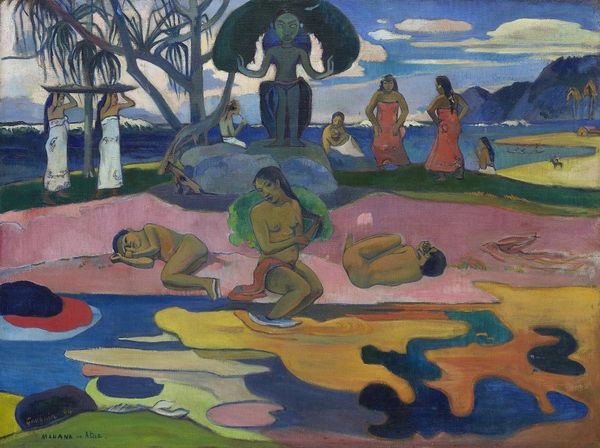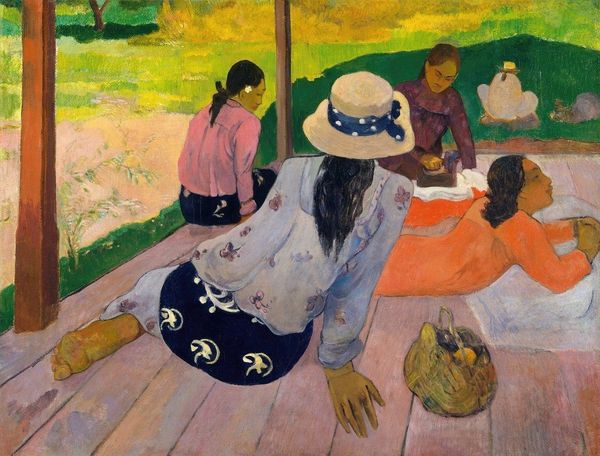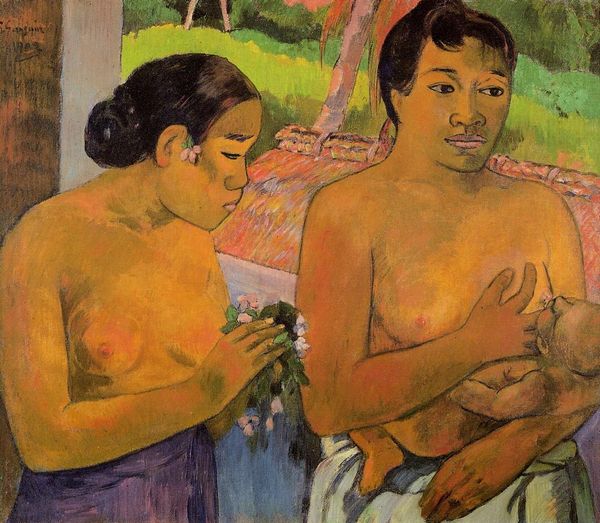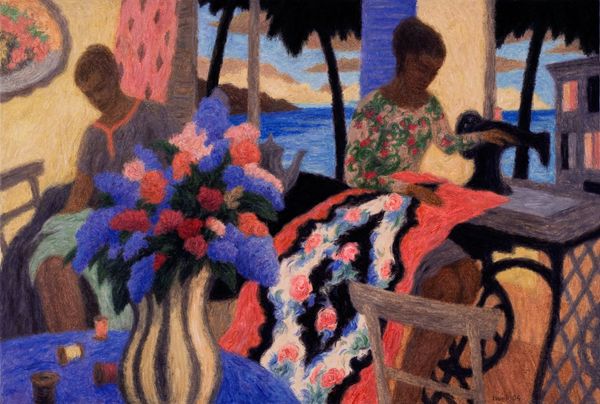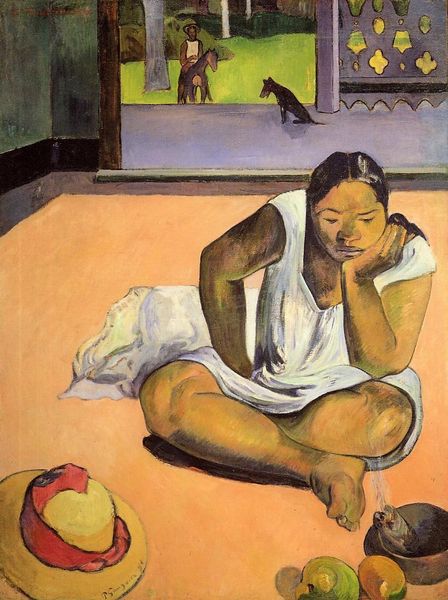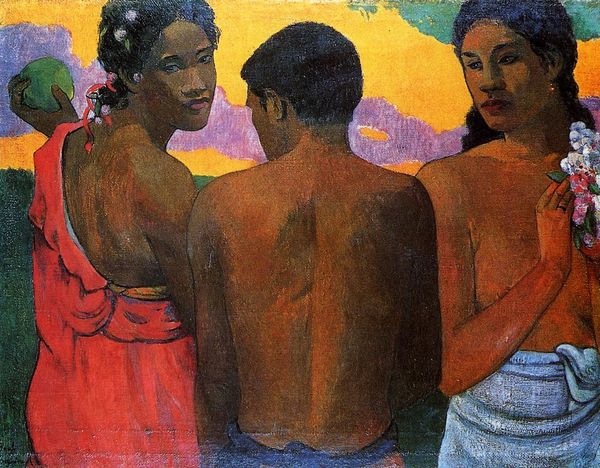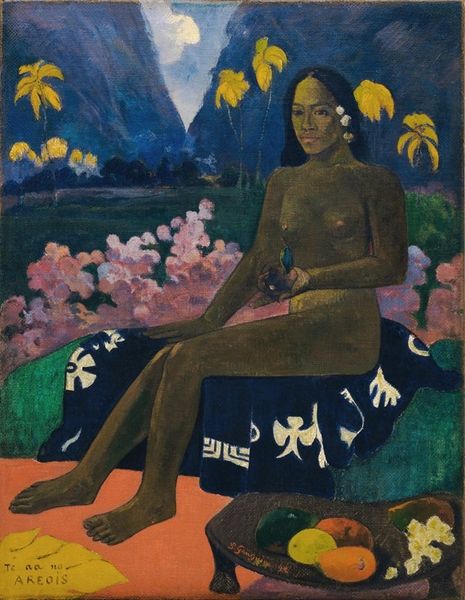
painting, oil-paint
#
portrait
#
figurative
#
narrative-art
#
painting
#
oil-paint
#
oil painting
#
group-portraits
#
orientalism
#
genre-painting
#
post-impressionism
#
portrait art
Copyright: Public Domain: Artvee
Paul Gauguin made "Parau Api. What News" in the 1890s, during his time in French Polynesia. It depicts two Tahitian women in a moment of quiet repose, inviting us to consider its commentary on colonial encounters. Gauguin came to Tahiti seeking an escape from European society, and his work certainly romanticizes the island's culture. The figures, with their vibrant clothing and serene expressions, suggest a life of simplicity. But it’s crucial to remember that Tahiti was a French colony at the time. The very act of Gauguin, a European artist, representing Tahitian subjects raises questions about power and representation. He exhibited these works in European galleries; therefore he was presenting his vision of the island to a Western audience. By consulting colonial archives, travel literature, and postcolonial theory, we can unpack these complex layers of cultural exchange and power dynamics, gaining a deeper understanding of the painting’s social and historical context.
Comments
No comments
Be the first to comment and join the conversation on the ultimate creative platform.
